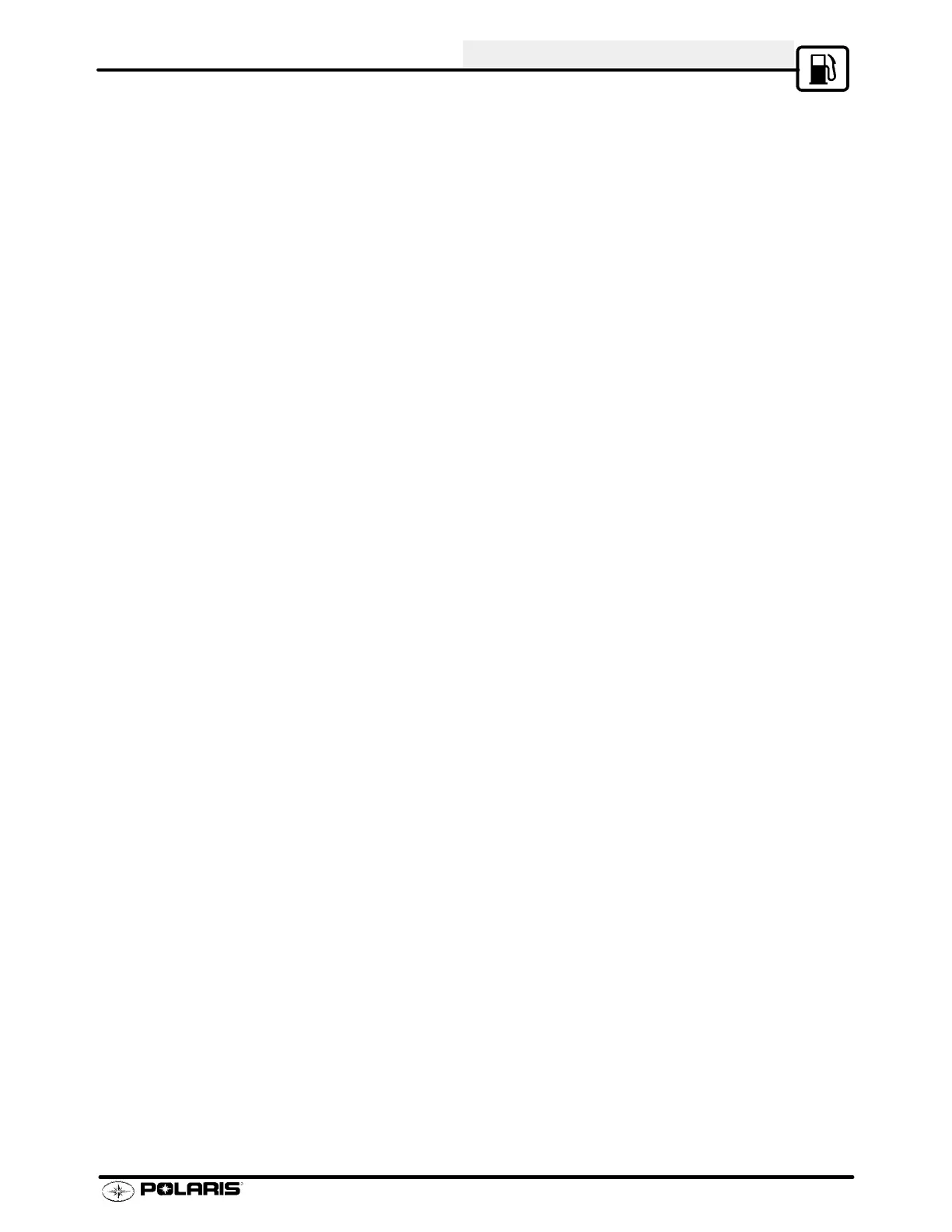Fuel / Exhaust
4.5
Keihin Carburetor System Overview
The Keihin carburetor is a floatless diaphragm type. Several separate but overlapping systems are used to meter
fuel and air properly.
1. Air Metering System
The metering of air is controlled by the throttle plate. The position of the throttle plate determines which fuel deliv-
ery system or systems supply fuel from the fuel chamber to the engine.
2. Inlet Needle Valve System/Fuel Chamber
The amount of fuel allowed into the fuel chamber is controlled by the inlet needle valve assembly. Opening and
closing of the valve is controlled by regulator diaphragm movement and spring pressure under the control arm.
The regulator diaphragm is sealed to the carburetor body forming two chambers. One side is vented to atmo-
spheric pressure, the other side (fuel chamber) is exposed to the venturi (low pressure) through the fuel delivery
jets and passages. Atmospheric pressure pushes on one side of the diaphragm, applying pressure on the control
arm in the fuel chamber. This reduces pressure on the inlet needle and allows it to lift more easily off the seat.
When the engine is running, pressure in the carburetor venturi (and therefore the fuel chamber) is less than atmo-
spheric. This increases the effect of the atmospheric pressure on the diaphragm and lever and overcomes spring
pressure. When the lever return spring pressure is overcome by these forces, the needle lifts off of the seat or
“pops off”, allowing pressurized fuel from the fuel pump to enter the fuel chamber. Fuel inlet needle “pop off” pres-
sure is influenced by many factors. Atmospheric pressure, venturi low pressure, the amount of spring pressure
on the control arm, and fuel pressure from the fuel pump all have an affect on operating pop off pressure. All of
these forces combined regulate the amount of fuel that enters the carburetor fuel chamber and the engine.
Changes to pop-off pressure are not recommended.
3. Idle (Slow) System
At idle and low throttle settings, fuel mixture is controlled by the idlemixturescrew and slowjet. At idle, the throttle
plate is open only far enough to uncover the idle port. The idle mixture screw controls fuel delivery to the idle port.
When the throttle plate is closed, fuel metered through the slow jet is mixed with incoming air through the bypass
ports to atomize the air/fuel mixture. For this reason, the idle speed must be set accurately before any adjust-
ments are performed to the idle mixture screw. As throttle opening increases, fuel from the slow jet is discharged
through the bypass holes to ensure proper mixture. The low speed adjusting screw can be used to fine tune the
idle and low speed system. Turning the screw in leans the mixture; turning the screw out richens the mixture.
4. Mid-Range System
Some models are equipped with a mid-range jet. At mid-range throttle openings (approximately 1/4 through 1/2
throttle) fuel mixture is determined primarily by the mid-range jet. The slow jet, idle mixture screw, main jet, and
high speed mixture screw have a minor effect on mid-range mixture. Fuel is metered through the mid-range jet
and discharged through the mid-range port. As throttle opening increases, the main jet has a greater effect and
the mid-range jet a lesser effect. The mid-range system does not have an adjustable mixture screw.
5. High Speed System
The high speed system consists of the secondary main jet, (single carburetor applications) and/or main jet This
has an effect on mixture from 1/4 to full throttle, with the greatest affect at 1/2 to wide open throttle. Compensating
for altitude is accomplished only by changing main jets.
6. Choke System
The purpose of the choke system is to supply an overly rich mixture for starting a cold engine. When the choke
plate is fully closed and throttle plate is open a strong vacuum is applied to the main nozzle, mid-range, bypass,
and idle ports, and a very rich fuel air mixture is discharged to the engine for starting.

